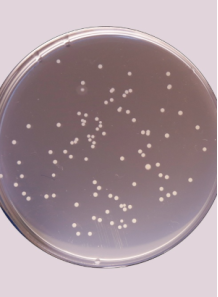E.Coli Counting Service
- Product Code: 127387
To enumerating Escherichia coli (E. coli) in various samples by using serial dilution and plating techniques on selective and differential media.
description Service Overview
Total E. coli Test Procedure
1. Purpose
To establish a standardized method for enumerating Escherichia coli (E. coli) in various samples by using serial dilution and plating techniques on selective and differential media. This procedure ensures accurate detection and quantification of E. coli by relying on characteristic colony morphology.
2. Scope
This procedure applies to water, food, and environmental samples submitted for total E. coli testing in the laboratory.
3. Responsibilities
-
Laboratory Technicians:
Perform the test according to this procedure, ensuring proper execution of each step and accurate documentation of all data. -
Quality Control Personnel:
Review test results and documentation to confirm adherence to the quality standards. -
Laboratory Manager:
Maintain, review, and update this procedure as necessary and ensure that all equipment is calibrated and maintained appropriately.
4. Materials and Equipment
Materials
- Sample (liquid, solid, or homogenized)
- Sterile diluents (e.g., 0.1% peptone water or phosphate-buffered saline)
- Selective/differential agar for E. coli (such as MacConkey Agar, Eosin Methylene Blue (EMB) Agar, or chromogenic E. coli agar)
- Sterile pipette tips and pipettes/ micropipettes
- Sterile dilution tubes or containers
- Sterile petri dishes
- Disposable gloves, lab coat, and safety goggles
Equipment
- Vortex mixer
- Incubator (set at 37°C ± 1°C or as specified)
- Colony counter (manual or automated)
- Marker pens for labeling
5. Procedure
5.1. Sample Receipt and Preparation
-
Receipt and Documentation:
- Verify the sample identification (sample ID, collection date, type) and record the relevant information in the laboratory log.
- Inspect the sample to ensure it has been stored and transported under proper conditions.
-
Sample Homogenization:
- For liquid samples: Mix thoroughly by inverting or gently shaking.
- For solid samples: Homogenize using a blender or stomacher with an appropriate volume of sterile diluent.
- Record the weight (for solids) or volume (for liquids) of the sample.
5.2. Serial Dilution
-
Preparation:
- Label a series of sterile dilution tubes with the corresponding dilution factors (e.g., 10⁻¹, 10⁻², 10⁻³, etc.).
-
Dilution Process:
- Transfer 1 mL of the sample into 9 mL of sterile diluent to achieve a 1:10 dilution (10⁻¹).
- Vortex the tube for 15–30 seconds to ensure thorough mixing.
- Continue performing serial dilutions until dilutions yielding countable colonies (typically 30–300 colonies per plate) are achieved.
5.3. Plating the Dilutions
-
Selection of Dilutions:
- Choose the dilution(s) expected to yield countable colonies. Plate more than one dilution if necessary to ensure at least one plate falls within the countable range.
-
Plating Methods:
-
Spread Plate Method:
- Pipette a measured volume (commonly 0.1 mL) of the selected dilution onto the surface of a pre-poured selective agar plate.
- Use a sterile spreader or glass rod to evenly distribute the inoculum over the agar surface.
-
Pour Plate Method (if applicable):
- Mix the dilution with molten selective agar (cooled to approximately 45–50°C) and pour the mixture into a sterile petri dish to solidify.
-
-
Labeling:
- Clearly label each plate with the sample ID, dilution factor, and date of plating.
5.4. Incubation
-
Incubation Conditions:
- Invert the plates to prevent condensation from dripping onto the agar surface.
- Incubate at 37°C ± 1°C for 18–24 hours (or as specified by the standard method).
- E. coli colonies will typically exhibit characteristic morphology (for example, pink/red colonies on MacConkey Agar, metallic green sheen on EMB Agar, or distinct color on chromogenic media).
-
Monitoring:
- Periodically verify that the incubator’s conditions remain within the specified range.
5.5. Colony Counting
-
Selection of Plates:
- After incubation, select plates that have 30–300 colonies for reliable enumeration.
-
Counting Colonies:
- Count the colonies exhibiting the characteristic appearance of E. coli using a manual or automated colony counter.
- Record the number of colonies along with the corresponding dilution factor and the plated volume.
-
Quality Check:
- If the colony count is too high (overgrown) or too low (under 30), note the discrepancy and consider re-plating using a different dilution.
timeline Service Steps
| Step | Procedure | Expected Result |
|---|---|---|
| info Service steps will be provided upon request | ||
Cart
No products



